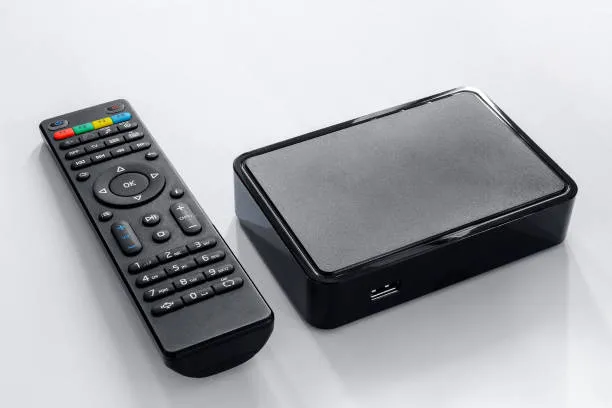what is iptv box

what is iptv box . In recent years, Internet Protocol Television (IPTV) has revolutionized the way people consume television content. IPTV boxes have become a popular choice for viewers seeking a convenient and versatile solution for accessing live TV channels, on-demand content, and multimedia services over the internet. In this comprehensive guide, we delve into the world of IPTV boxes, exploring what they are, how they work, and the benefits they offer to consumers.
Understanding IPTV Boxes
An IPTV box, also known as an IPTV set-top box (STB) or IPTV receiver, is a specialized device that connects to a television set or display monitor to deliver multimedia content over Internet Protocol (IP) networks. These devices serve as the interface between the user and the IPTV service provider, enabling access to live TV channels, video-on-demand (VOD), streaming media, and interactive applications.
Key Features of IPTV Boxes
IPTV boxes come with a range of features and functionalities designed to enhance the viewing experience and provide users with access to a diverse array of content. Some key features of IPTV boxes include:
- High Definition (HD) and Ultra High Definition (UHD) Support: Many IPTV boxes support high-definition (HD) and ultra-high-definition (UHD) video resolutions, providing viewers with crisp, clear, and immersive visuals for an enhanced viewing experience.
- Multimedia Playback: IPTV boxes support various multimedia formats, including audio, video, and image files, allowing users to access and playback their own media content stored on external devices or network storage.
- Electronic Program Guide (EPG): Most IPTV boxes come with an electronic program guide (EPG) that displays information about available TV channels, program schedules, and upcoming shows, making it easy for users to browse and navigate content.
- Time-Shifted Viewing: Some IPTV boxes offer time-shifted viewing features, allowing users to pause, rewind, or fast-forward live TV broadcasts, enabling them to catch up on missed programs or events at their convenience.
- Video-On-Demand (VOD): Many IPTV boxes support video-on-demand (VOD) services, giving users access to a library of movies, TV shows, documentaries, and other on-demand content for streaming anytime, anywhere.
- Interactive Applications: IPTV boxes may support interactive applications and services, such as gaming, social media, web browsing, and e-commerce, providing users with additional entertainment and utility options beyond traditional TV viewing.
How IPTV Boxes Work
The operation of an IPTV box involves several components and processes working together to deliver multimedia content to users’ screens. Here’s a simplified overview of how IPTV boxes work:
- Content Acquisition: IPTV service providers acquire multimedia content, including live TV channels, VOD titles, and other programming, from content providers, broadcasters, studios, and streaming platforms.
- Content Encoding and Transcoding: The acquired content undergoes encoding and transcoding processes to prepare it for delivery over IP networks. Encoding compresses the audiovisual data into digital formats suitable for streaming, while transcoding converts the content into multiple bitrates and resolutions to accommodate varying network conditions and device capabilities.
- Content Management and Delivery: The encoded and transcoded content is stored on servers or cloud-based storage platforms and managed by middleware systems. Content delivery networks (CDNs) distribute the content to IPTV boxes and other user devices over IP networks using Internet Protocol (IP) packets.
- User Authentication and Authorization: Before accessing IPTV content, users must authenticate themselves and obtain authorization from IPTV service providers. This may involve logging in with a username and password, validating subscription status, or verifying device credentials to ensure secure and authorized access to content.
- User Interface and Interaction: Once authenticated and authorized, users interact with the IPTV box through the user interface, which typically includes a graphical user interface (GUI) or on-screen display (OSD). Users can navigate menus, browse content, select channels, and control playback using a remote control or other input devices.
Benefits of Using an IPTV Box
IPTV boxes offer several advantages over traditional television services and streaming devices, making them an appealing choice for consumers. Some key benefits of using an IPTV box include:
- Access to Live TV Channels: IPTV boxes provide users with access to a wide range of live TV channels from around the world, including local, regional, national, and international broadcasts, catering to diverse audience preferences and interests.
- On-Demand Content: IPTV boxes offer on-demand access to a vast library of movies, TV shows, documentaries, and other multimedia content, allowing users to watch their favorite programs at their convenience without being tied to broadcast schedules.
- Customization and Personalization: IPTV boxes support customizable features and settings, allowing users to personalize their viewing experience by creating favorite channel lists, setting parental controls, and customizing audio and video settings to suit their preferences.
- Cost-Effectiveness: IPTV boxes offer cost-effective alternatives to traditional cable and satellite TV services, with subscription plans, pay-per-view options, and bundled packages that provide access to premium content at competitive prices.
- Convenience and Flexibility: IPTV boxes provide users with the convenience and flexibility of streaming multimedia content directly to their television sets or display monitors, eliminating the need for additional equipment, cables, or satellite dishes.
- Integration with Other Services: IPTV boxes can integrate with other digital services and devices, such as home automation systems, voice assistants, and smart home devices, enabling seamless connectivity and interoperability within the smart home ecosystem.
Conclusion
In conclusion, IPTV boxes have emerged as a versatile and convenient solution for accessing live TV channels, on-demand content, and multimedia services over the internet. With their advanced features, customizable settings, and user-friendly interfaces, IPTV boxes offer consumers a compelling alternative to traditional television services and streaming devices. As technology continues to evolve and innovate, IPTV boxes are expected to play an increasingly prominent role in the future of home entertainment, providing users with enhanced viewing experiences and greater flexibility in how they consume television content.


